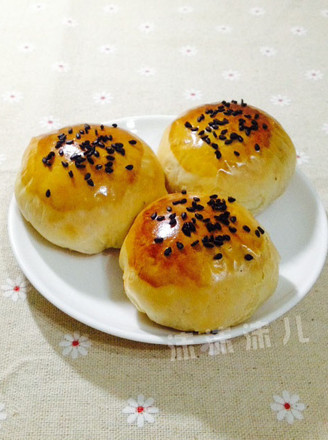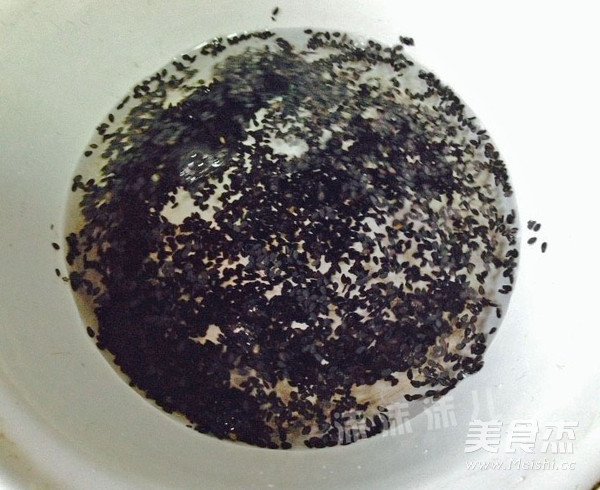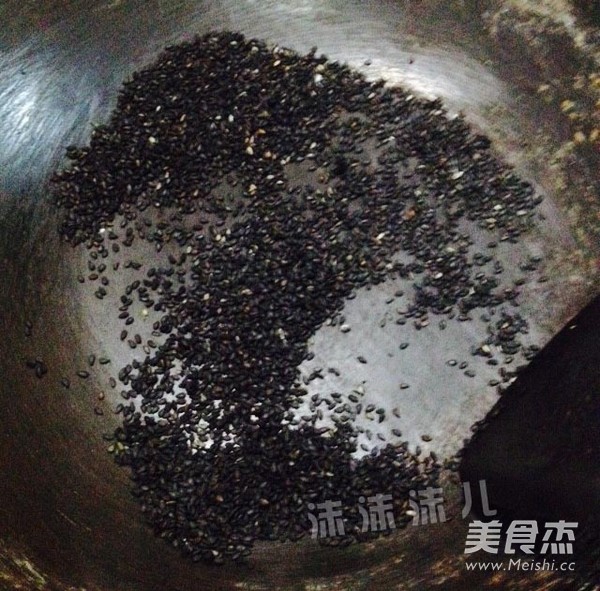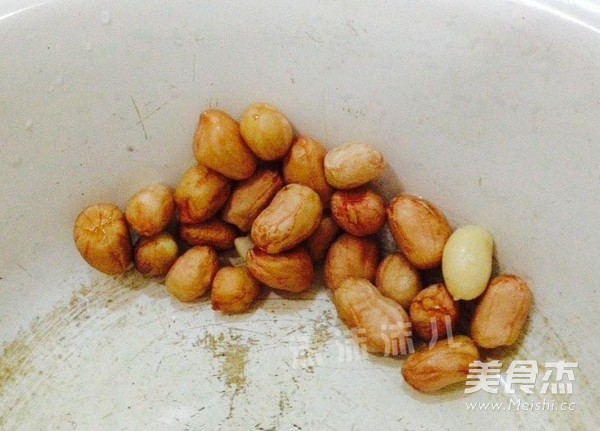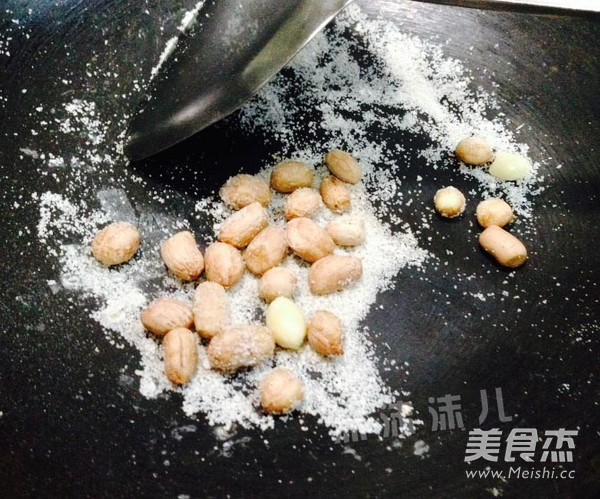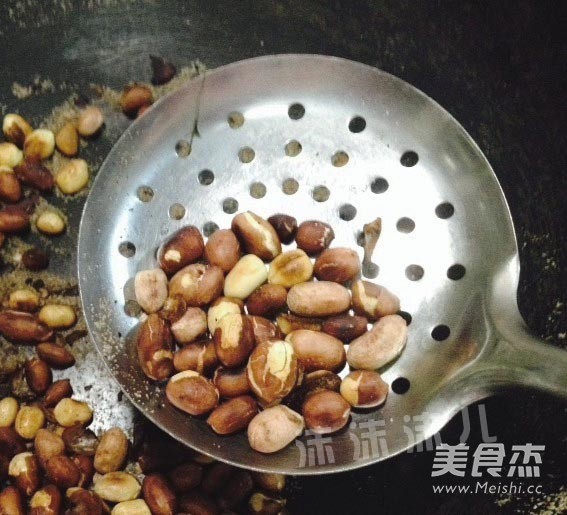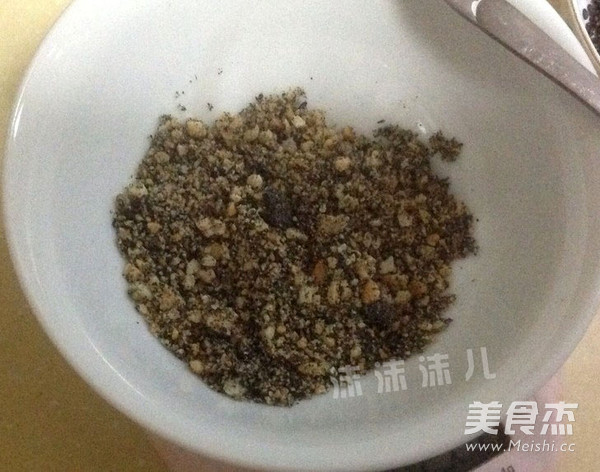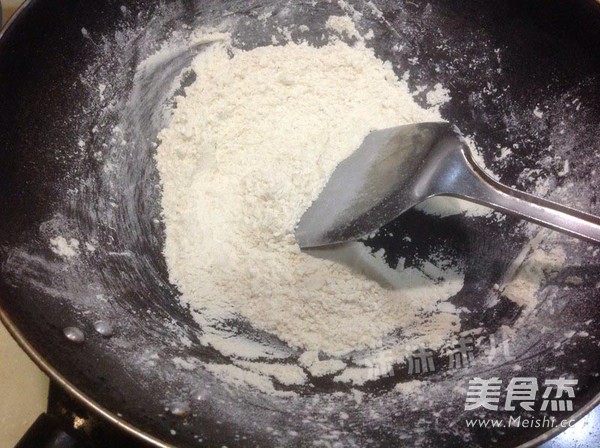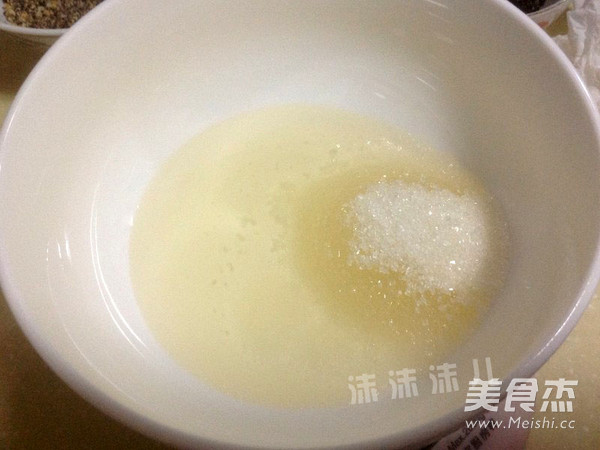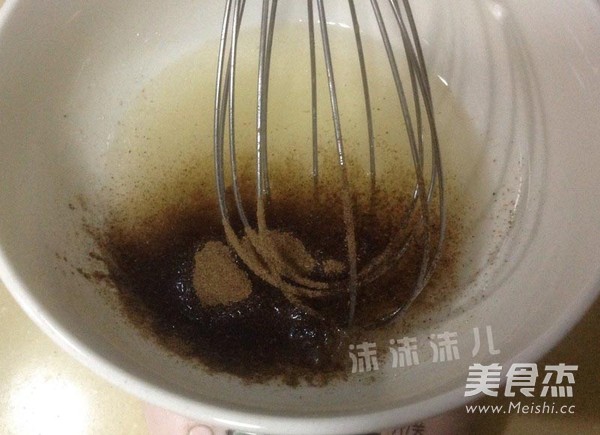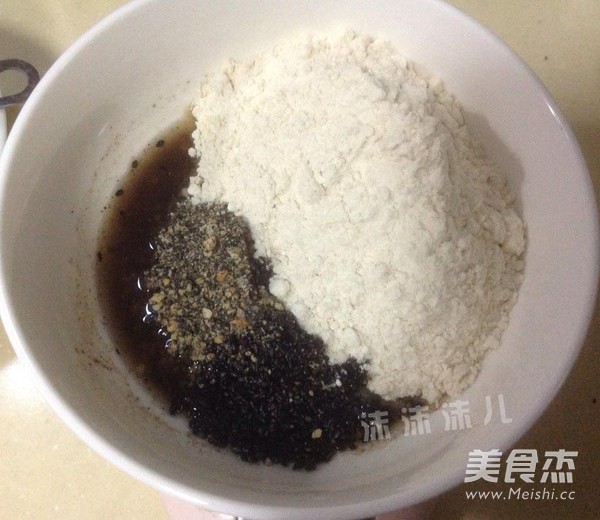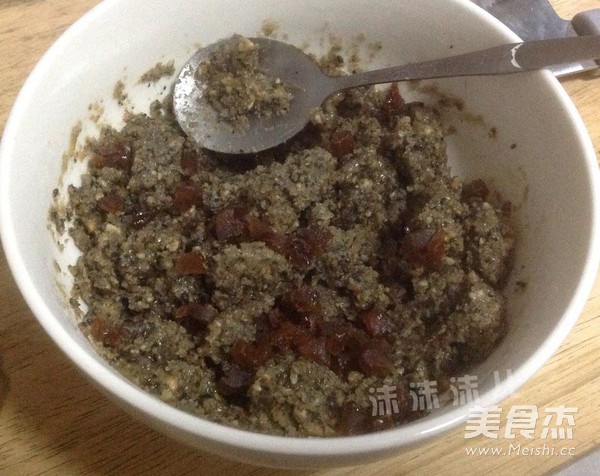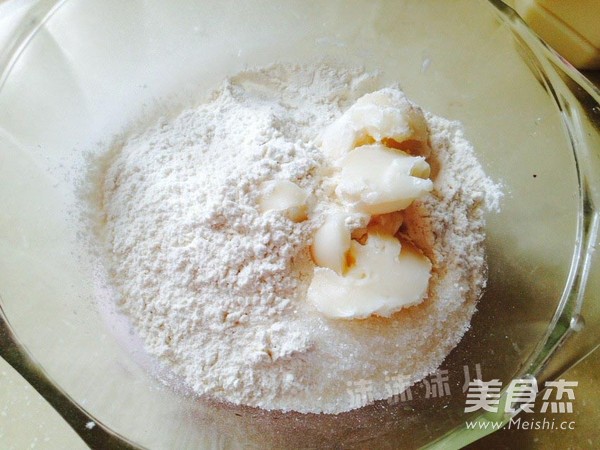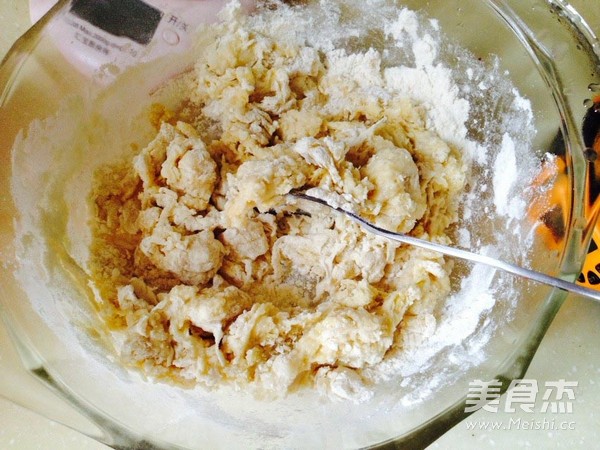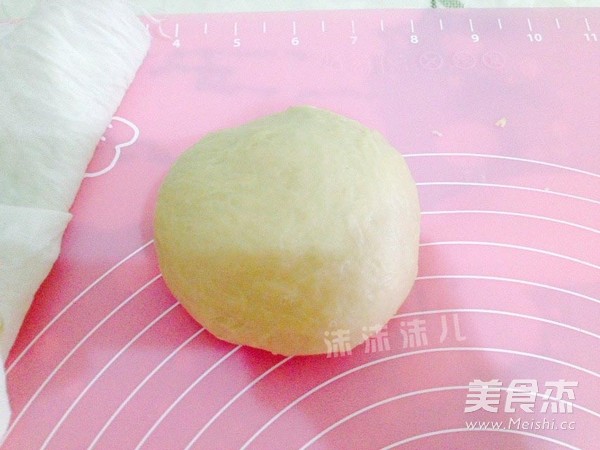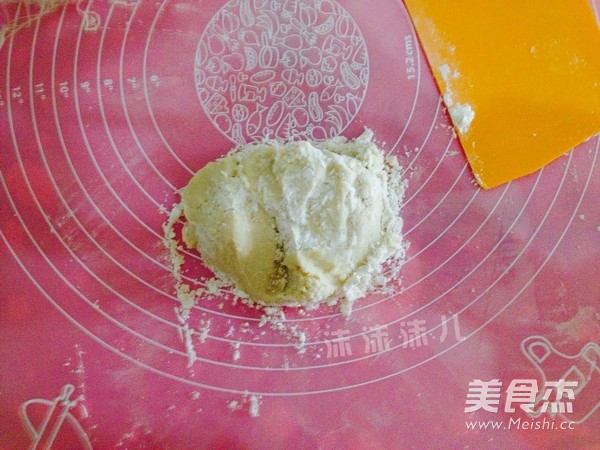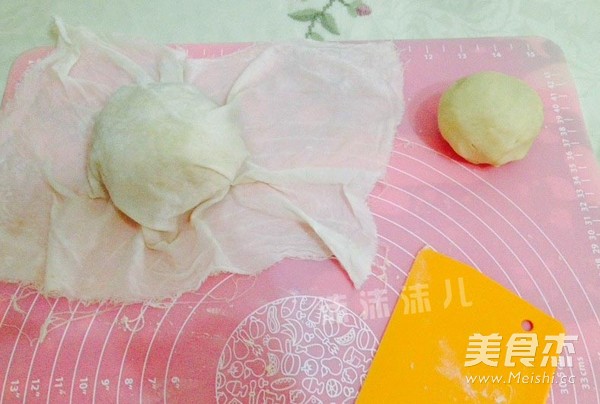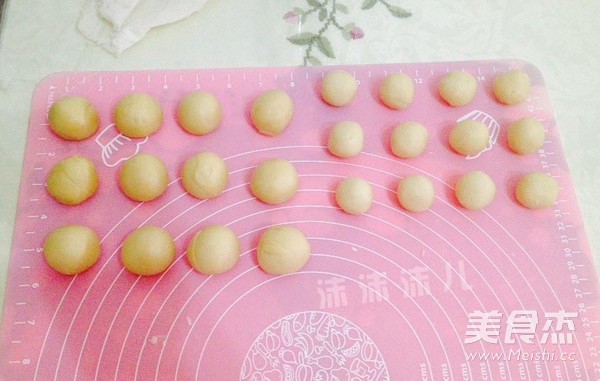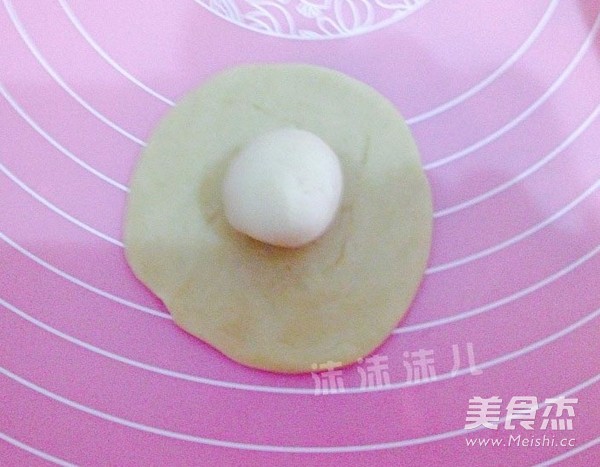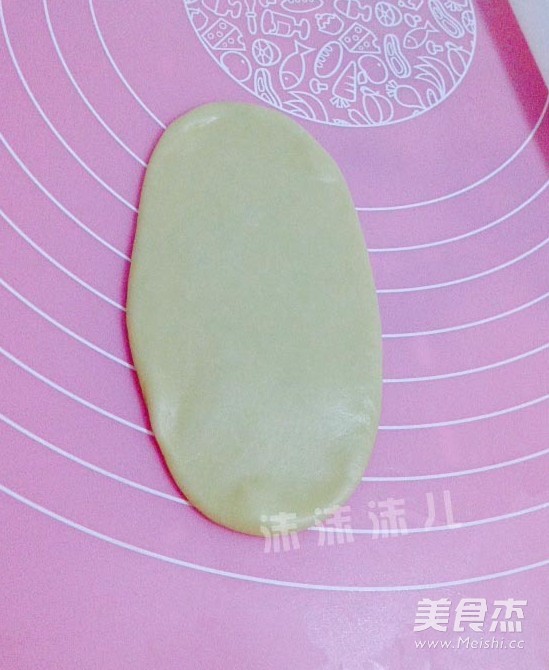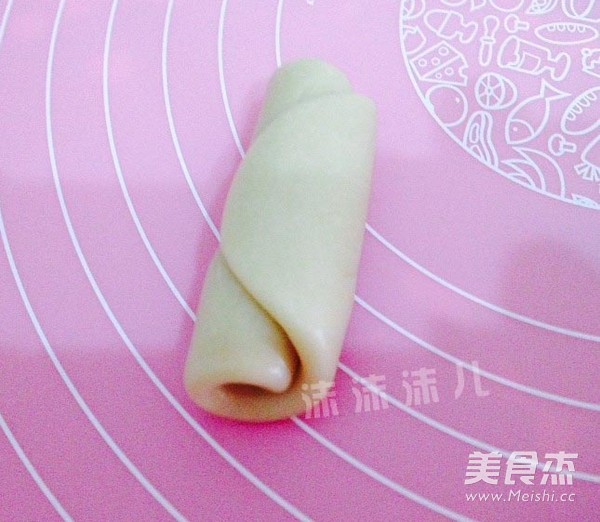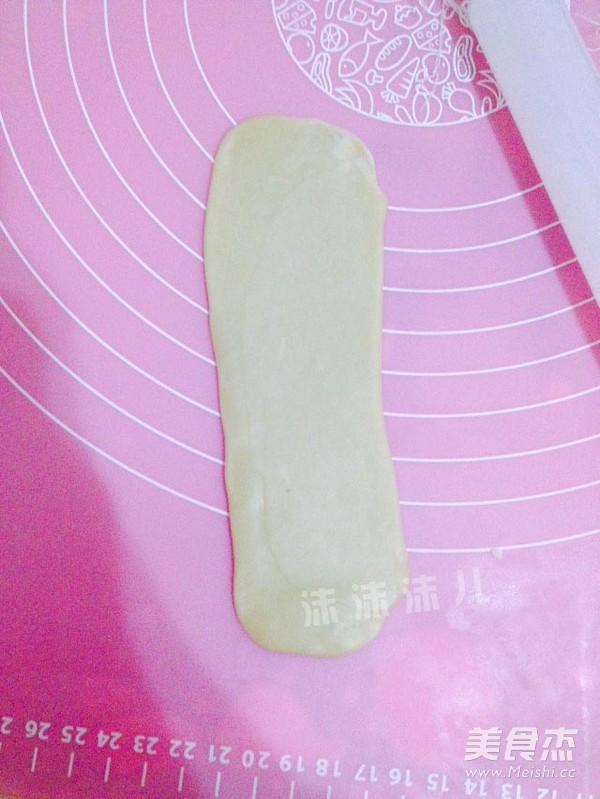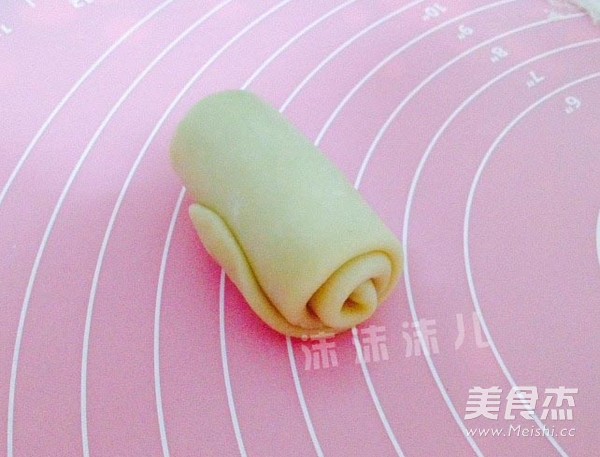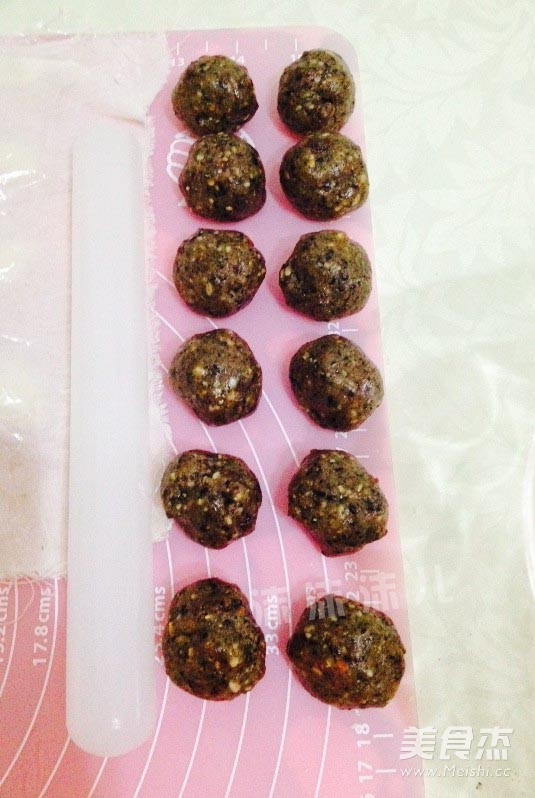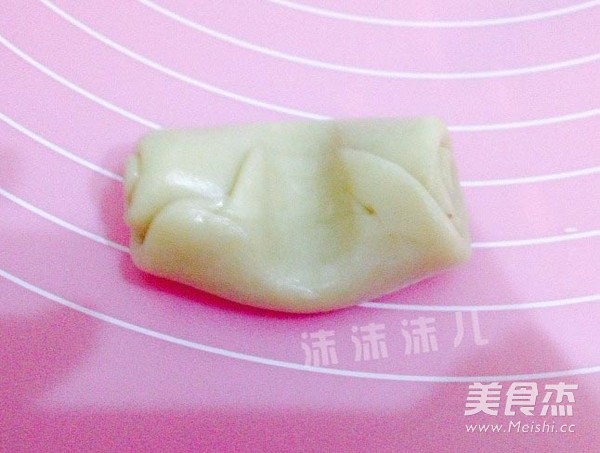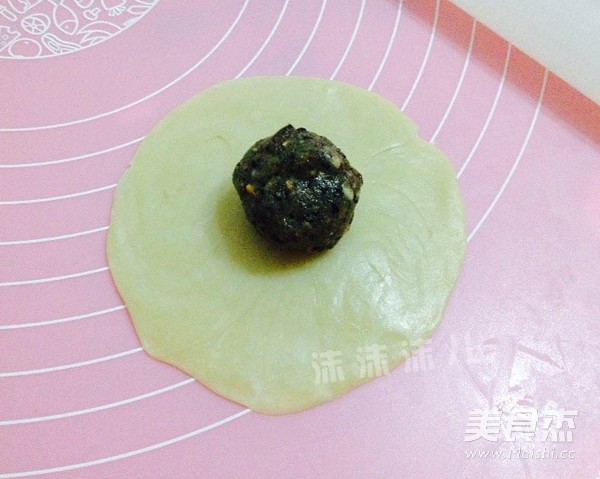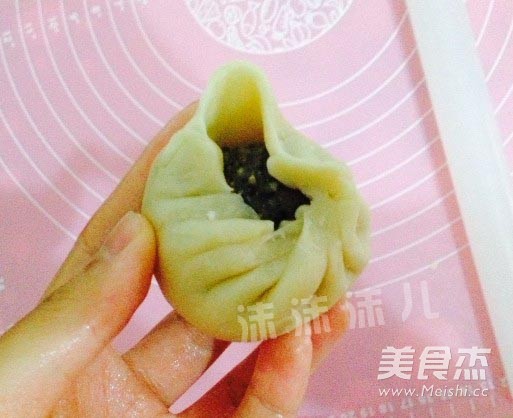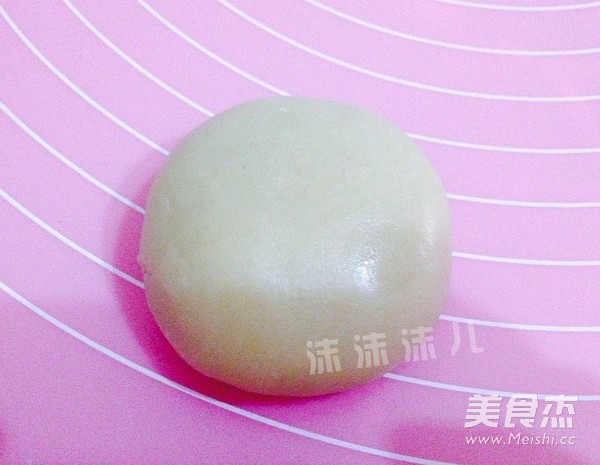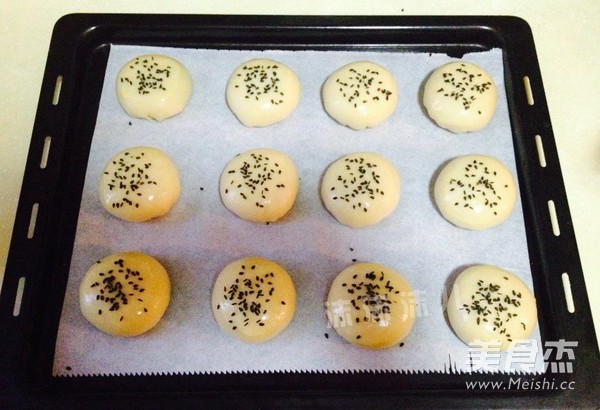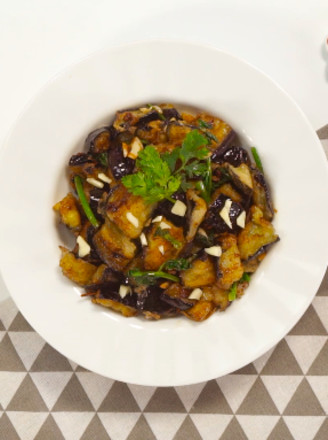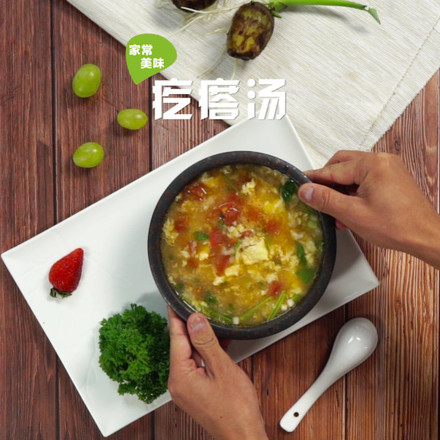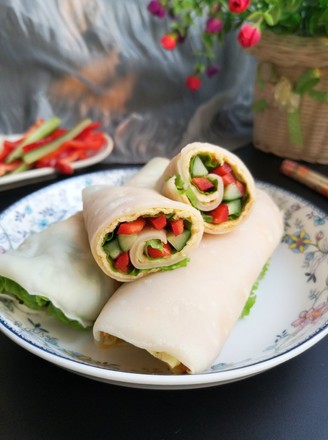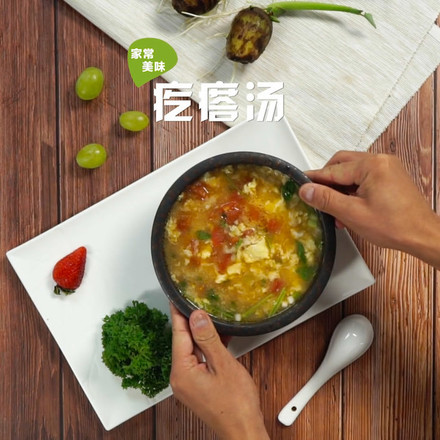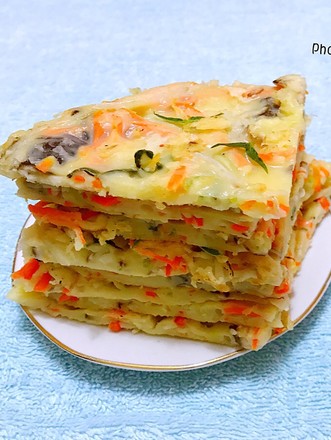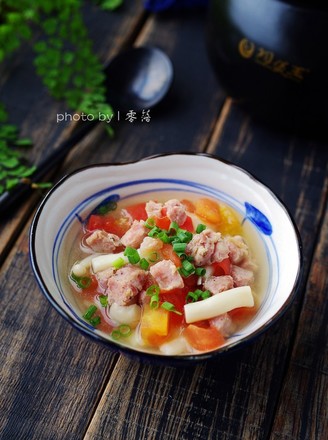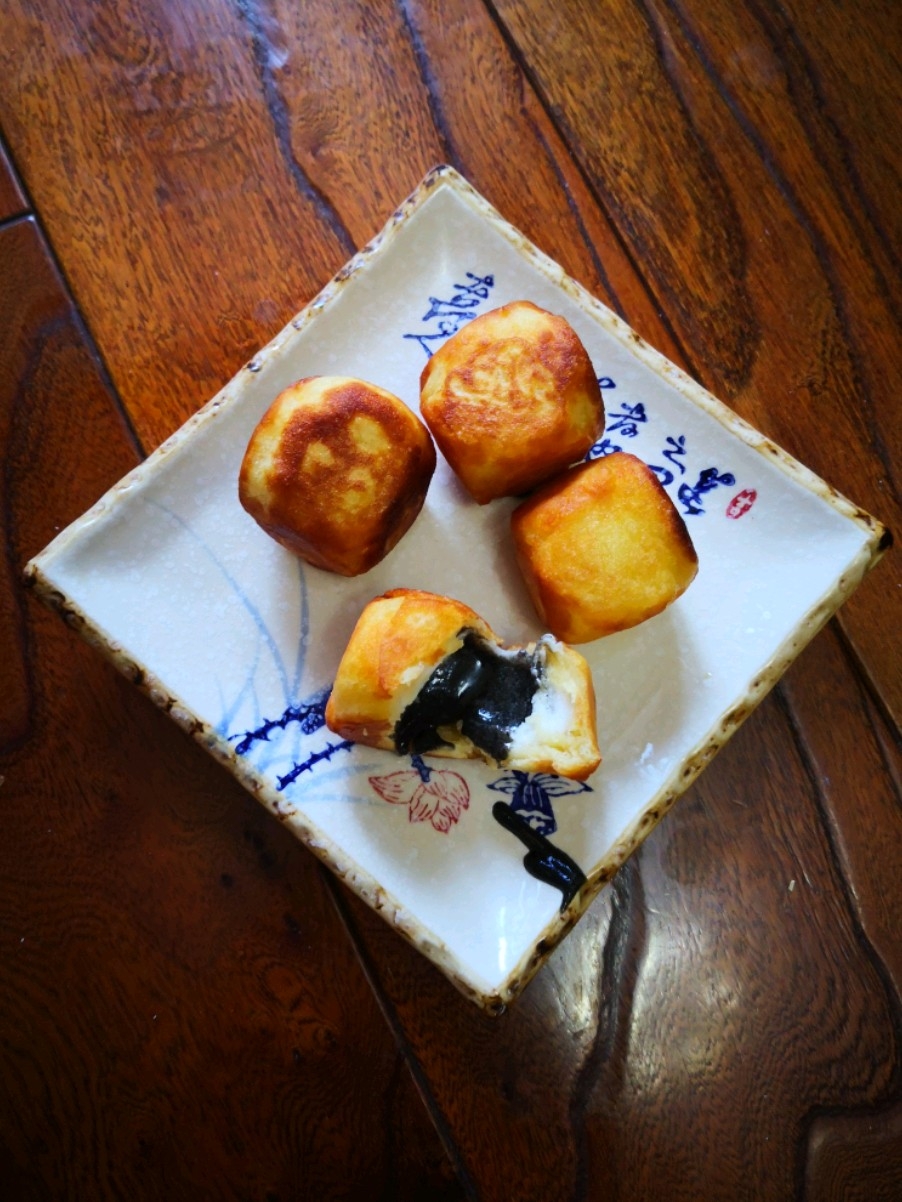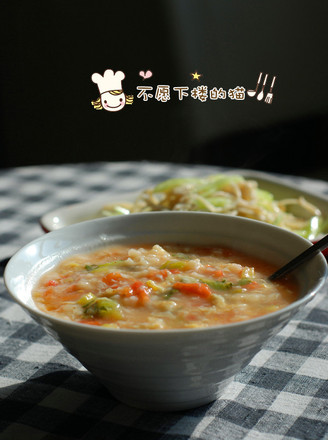Pretzel
1.
The flour, sesame and peanuts needed to make the salt and pepper sesame filling are all cooked, so we will fry them separately. First, fry the sesame seeds, wash the raw sesame seeds with water and drain them. (Because the sesame seeds will naturally be cooked when the water is slowly fried dry. So this step is not only for cleaning, but also to better avoid frying)
2.
Add sesame seeds in the pot without water and oil, and stir-fry. The heat is low throughout the whole process, and the spatula must be turned constantly to ensure that the sesame seeds are evenly heated. After about seven or eight minutes, the sesame seeds begin to smell and there is a slight crackling sound. At this time, turn off the heat and stir fry with the remaining heat. You can eat a little bit, if it is crispy and without moisture, immediately serve it out for later use. Otherwise it is easy to suffer.
3.
Then fried peanuts. Blanch the peanuts with freshly boiled water, then drain the water immediately. Move fast. (This is also to ensure that the fried peanuts are not burnt and crispy to the greatest extent. But you can also omit this step and fry the peanuts directly)
4.
Heat a pan over medium heat, with no water and oil in the pan, and add some salt. Put the peanuts in a pot and stir fry over high heat. In the same way, the spatula has to be turned around all the time. When the peanuts crackle with slight peeling, turn to medium and low heat and stir continuously.
5.
Continue to stir fry two more times, strain out the salt with a colander, and set aside. (Because the peanuts have been blanched in boiling water, they will not change too much. The picture shows the dry peanuts I added later and fried directly. It can be seen that the color is darker and the peeling is more serious. In short, the dry peanuts directly fried will be better than boiling water. The blanching time is short, and you must always be careful not to fry)
6.
The fried peanuts are rubbed off the skin, another half of the fried sesame seeds are taken, and the peanuts are put into a mortar and crushed. The peanuts and sesame seeds are crushed and set aside.
7.
Then there is fried flour. Just like sauteing sesame seeds, there is no water and no oil in the pan. Slight fire throughout. The spatula turned constantly. Stir-fry until the color of the flour turns slightly yellow (not obvious) and the aroma of cooked flour comes out (obvious). Stir-fried cooked flour for later use.
8.
Pour the oil, sugar and salt into a bowl. Stir well.
9.
Add pepper powder. Continue to stir evenly.
10.
Add the fried flour, black sesame kernels, black sesame seeds and crushed peanuts. Mix well. At this point, the basic salt and pepper sesame filling is ready.
11.
Add the chopped candied fruit to your liking. Winter melon strips, candied dates, etc. are all fine. Stir well again. So the pepper and salt sesame filling is finished. Set aside for later use. If it stays overnight, it needs to be sealed with plastic wrap and refrigerated.
12.
Next, make the dough. Pour the all-purpose flour, lard, and white sugar 2 used to make the water oil skin into a bowl. Break the eggs into egg liquid, pour a part in a bowl, and bury it with flour. (Eggs in the water and oil skins are optional. I just used eggs for the purpose of brushing the egg liquid on the surface later... If you don’t use eggs, the amount of water should be increased appropriately)
13.
Pour 80-degree hot water into a bowl (about boiling water to shake it in the cup for a few times), and stir quickly to make the flour and water combine into a snowflake shape. (The flour can be partially cooked with hot water, making the dough easier to handle. The egg was buried in the previous step to prevent it from being blanched at once)
14.
Pour the flour lump on the chopping board and knead it vigorously to form a smooth dough. The oily skin needs to be rubbed more to withstand all kinds of toss in the later stage. Cover the kneaded dough with a damp cloth or plastic wrap and set aside for later use.
15.
Next, make shortbread. Mix low-gluten flour and lard. Pour on the chopping board and knead until the lard and flour are completely combined into a dough. At first, it will be dry and loose, and it won't form a dough. Just keep kneading and don't add water.
16.
Knead into a smooth pastry dough and set aside. Leave the water-oiled crust and shortcrust dough for 20 minutes to relax. Remember that the water and oily skin must be covered with a damp cloth or plastic wrap. The shortbread does not need to be covered and can be left open.
17.
Divide the loose water and oily skin and pastry into 12 equal parts, and knead them into balls for later use. In the process of dividing the water and oily skin, always remember to keep it covered with a damp cloth or plastic wrap.
18.
Take a water and oily skin dough, flatten it, and roll it into a round piece. Put a shortbread dough in the center. Wrap the shortbread with water and oily skin and pinch it tightly.
19.
Flatten the wrapped dough and roll it into a beef tongue shape with a rolling pin. Be gentle when rolling. (Apply some oil on the rolling pin to prevent the oily skin from being lifted)
20.
Roll up the beef tongue-like dough from top to bottom. After all the rolls are finished, cover with a damp cloth or plastic wrap and relax for 15 minutes. (Because of the hot water used, the flour is partially ripened, the relaxation time here can be shortened, but just in case, it is still recommended to relax)
21.
Flatten the loose noodle rolls, and roll them into a strip with a rolling pin for the second time, which is thinner and longer than the first time.
22.
Roll it up again from top to bottom. Cover the rolled dough again with a damp cloth or plastic wrap and let it rest for 15 minutes. (It needs to relax for enough time here, otherwise the shortbread is easy to be pressed out)
23.
To relax the dough, divide the salt and pepper sesame filling made before into 12 portions and knead them into balls.
24.
Take a loose dough and press a mark in the middle with your fingers.
25.
Push the sides to the center.
26.
Press flat. Use a rolling pin to roll into a thin round piece with a thickness in the middle, and place a portion of the salt and pepper sesame paste in the middle.
27.
Wrap the stuffing with the dough and pinch it tightly.
28.
Close the mouth down, make it into a circle, and gently press with the palm of your hand to flatten it a bit. (If you want to bake the shortbread into a ball-shaped top, you don’t need to press it)
29.
All wrapped, the shortbread green embryo is finished. At this time, preheat the oven at 200 degrees. Then put the shortbread embryos on the baking tray, brush the surface with a thin layer of egg wash, and sprinkle with black sesame seeds.
30.
Put it in the oven, heat up and down at 200 degrees, and bake for 20 minutes, until there are obvious layers on the surface of the puff pastry and the color is golden.

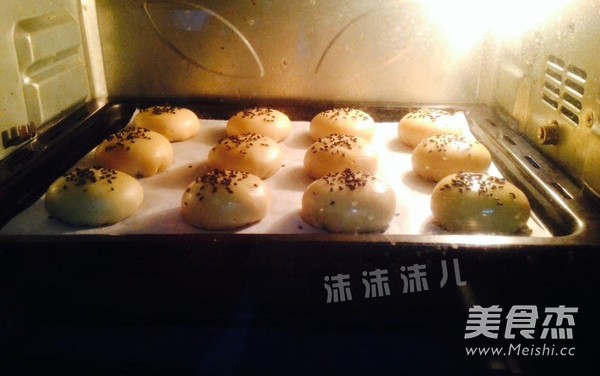
Tips:
1. Shortening effect: lard>butter>vegetable oil. Traditional Chinese shortbread is made with lard. If you don't have or don't want to use lard, you can also use butter or vegetable oil instead, but the flavor and crisping effect will be greatly reduced.
2. There are no eggs in most water and oil skin recipes. In addition to adding eggs to increase the crispness and flavor, it is actually purely for the purpose of brushing the egg liquid on the surface later, and you can't finish the whole egg, so it is placed in the oil skin. ...If you don't use eggs, the amount of water should be increased appropriately.
3. Again, the amount of water that needs to be added to knead any flour into a dough depends on the condition of the dough, and it is related to the region, humidity, and water absorption of the flour. If there is less, you can make up water, if there is more, it is not suitable for making up noodles. So the amount of water is only a reference, not a fixed one. It is recommended to reserve 20% of the amount when adding water.
4. Fry sesame, peanuts, and flour, be diligent, stir fry all the time, don't stir fry. Sometimes the difference between crispy and bitterness is just a few seconds.
5. Sesame cleaning and peanut blanching are not necessary and can be omitted. However, if you directly stir fry, you must be more careful not to fry.
6. It is not necessary to add candied fruit in the filling, just use the basic salt and pepper sesame filling directly. Adding candied fruit tastes more flavorful.
7. Scalding the flour with hot water can partially mature the flour and make the dough softer and easier to handle. The slack requirements for the latter are not so high, but in order to avoid the leakage of the cracked puff pastry, it is still recommended to slack. Double insurance. If you directly use cold water to make the noodles, then relaxation is necessary and indispensable, but haste is not enough.
8. Water-oil-skin dough should be covered with a damp cloth or plastic wrap throughout the entire process, otherwise it will dry and crack and cannot be operated.
9. When rolling the puff pastry, apply some oil on the rolling pin, otherwise the oily skin will be lifted, and there will be no more oil. When rolling, the movements must be gentle and gentle.
10. When closing the stuffing, you need to be careful not to expose the stuffing. If the crust is not rolled large enough to directly enclose the filling ball, gently lift the edge of the crust so that the filling should not be stained at the end. In short, be sure to wrap tightly and squeeze tightly.
11. Any baking temperature and time are closely related to the temperament of your own oven. The temperature and time are not fixed, please depend on the specific situation of your own oven.

